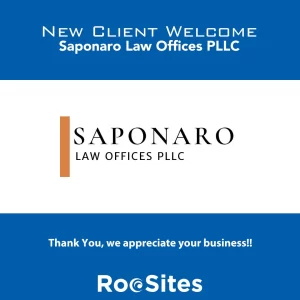At RooSites, we’re passionate about supporting meaningful organizations and talented individuals by building websites that reflect their purpose and personality. Welcome to the RooSites family—we look forward to growing with you!
Contact RooSites Today if you need help designing, developing or managing your website.

Based in Wellesley, Massachusetts, Saponaro Law provides exceptional legal services across all aspects of family law. Their experienced attorneys are skilled trial lawyers, negotiators, legal counselors, and crisis managers, dedicated to the superior representation and needs of each client.
We are honored to be chosen to design, develop, and manage their new website, and we look forward to supporting their mission of excellence and integrity in every client matter.
If you’d like, help with your Boston Web Design project, please contact us today.